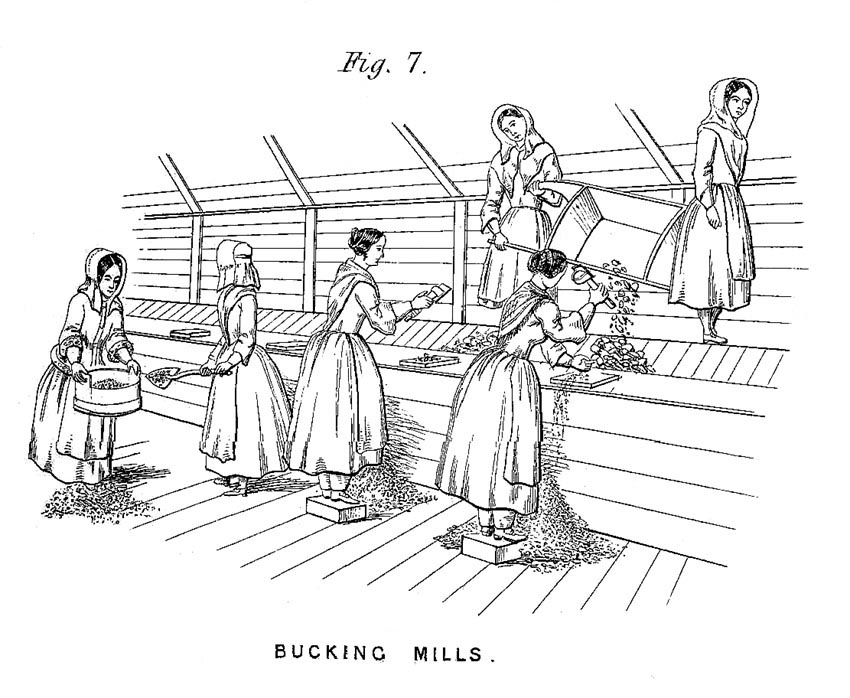 Before
about 1720, mining operations in Cornwall were very simple. Where
mining was a family concern, the men and older boys would be involved
in the heavier work. The women, girls and younger boys may have
been involved in washing, panning, sorting ore from waste, or grinding
or breaking down rock-bearing ore. Before
about 1720, mining operations in Cornwall were very simple. Where
mining was a family concern, the men and older boys would be involved
in the heavier work. The women, girls and younger boys may have
been involved in washing, panning, sorting ore from waste, or grinding
or breaking down rock-bearing ore.
From
about 1720 onwards, with more reliable water pumps, ore could be
raised from deeper levels. Mines began to employ in much larger
numbers, including the workers needed to dress the copper and tin
ores being raised. It was mainly women and children who were taken
on for these tasks. Girls generally started work between the ages
of 10 and 15 years, but some were only 6 or 7. They would usually
continue at the mine until they were married. Older single women
and widows were also employed. In the 1840s and 1850s, depending
on age, they would be earning between 4d and 8d per day. By about
1880 this had increased to 8d to 12d.
As
ore stuff was brought to the surface at the tin mines, it was initially
broken by male labourers, and then ‘spalled’
(broken) by older women or girls, using a long handled hammer. This
was then stamped and the resulting finest material sent for separation
at the buddles (usually attended by boys). It then went for further
separation at the trunks and kieves, until the finest slimes of
all were separated at the tin frames. Girls or boys attended the
first of these two operations. Framing
was a highly delicate task, and was allocated to younger women and
girls. The jigging (sieving) of the heavier particles was a task
done by stronger boys or women (when done by hand), or by boys or
girls when using the semi-mechanised jigging
boxes.
At
the copper mines the tasks differed slightly. After spalling,
the youngest girls (7-11 years) washed
and sorted (picked) the different ores. This was a highly skilled
(but wet and dirty) job. Next, ‘cobbers’
used a short handled hammer to break the picked ore into hazel nut
sized pieces, and then ‘buckers’
used a flat faced hammer to grind the cobbed ore into a fine powder.
Both of these tasks were demanding; only the most robust women and
girls were able to do the latter. Buddling and jigging
were carried out as for tin. Teams of women and girls were also
employed in griddling
or barrowing. They would work in pairs using hand barrows, carrying
over 1.5 cwt between them.
Girls
or women were sometimes employed at the calciner,
where they fed arsenical tin or copper ore into the furnace via
the hopper, in order to separate out the arsenic. |









